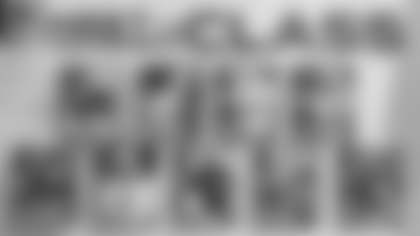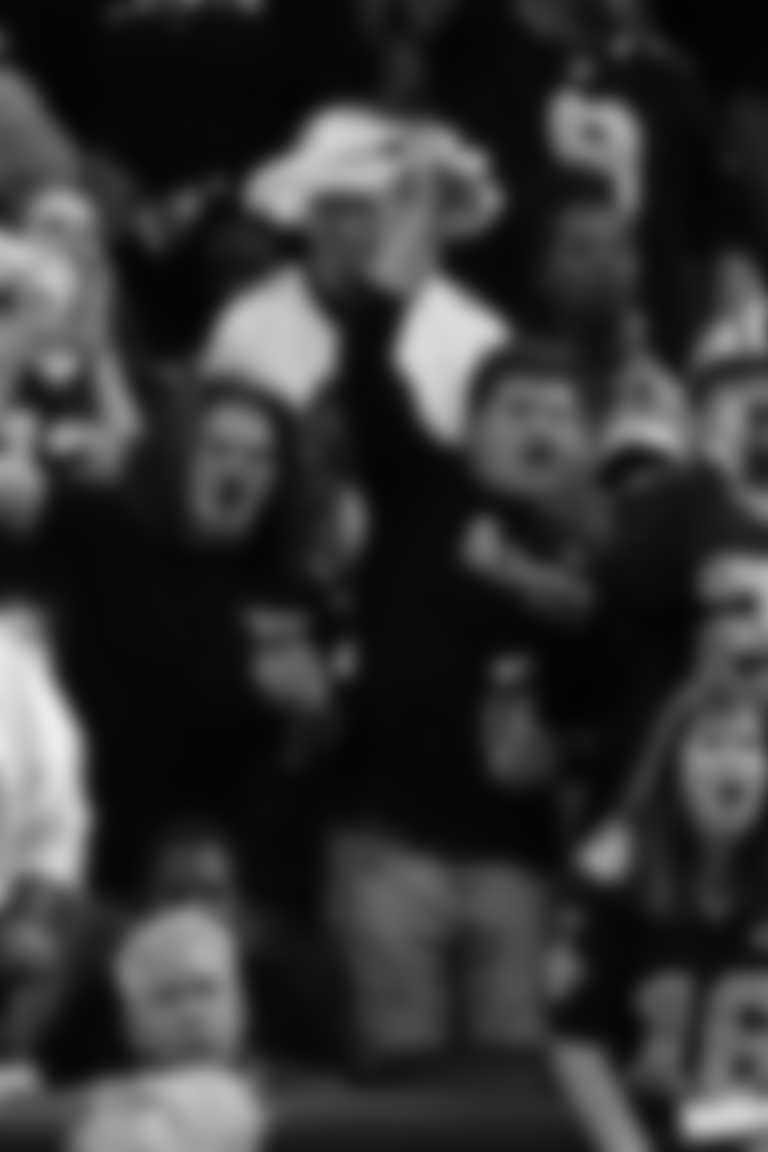Perhaps more than other years, Jeff Ireland and the New Orleans Saints were looking for hit-the-ground-running types in the NFL Draft.
No, Ireland, the Saints' assistant general manager and director of college scouting, wasn't willing to cut corners on other traits that New Orleans looks for in prospects. It doesn't mean much if the prospect can hit the ground running, but not know where to run to.
But knowing there would be no offseason program due to COVID-19 precaution, Ireland and his scouts knew that mentally, draft picks would have to be acute in order to get up to speed quickly and put themselves in position to contribute as rookies.
So when the Saints picked Michigan center/guard Cesar Ruiz (first round), Wisconsin linebacker Zack Baun and Dayton tight end Adam Trautman (third round), and Mississippi State quarterback Tommy Stevens (seventh round) in the draft, it was with the thought that not only were they key positional picks, but that they're sharp enough to step in and help.
"Our philosophy going into draft day, and then part of the conversation that we took when we were meeting, was we feel like if there's not going to be an OTA process, there's not going to be an offseason program for these young players – these young rookies, these first-time players – then we've really got to make sure that we're getting the right kind of person, that can come into maybe a condensed training camp setting and contribute quickly," Ireland said.
"If we had a question about how the kid learns and if maybe he's a slow processor, we felt like that might be difficult to bring him up to speed as quickly as we want to without the OTAs and the minicamps and all the offseason program stuff that we would do with the player. So we really approached it quality over quantity. Those four players checked all these boxes that we needed to be checked. We felt like the clearest path to our roster with those players was very clean."
There isn't much questioning whether Ireland and the scouting staff have been successful enough with that thought process.
Since 2015, of the 21 Saints draft picks who have started at least one game for the team, 16 are on the current roster. Ireland and the college scouts continue finding players who fit the Saints' profile.
"I explicitly trust them," he said of the scouting staff. "You have to. You have to be a good listener in my position because you're going to have information flying at you from a million different angles, and you have to be able to absorb the information, what's important.
"You have to have continuity on your staff to know that this guy, he's a little tougher on the makeup (of a player), or maybe he's not as tough as my West Coast guy, or whatever. Maybe he's a hard grader, maybe this guy is a soft grader. You have to understand where the player is coming from, continuity is important, and you have to trust these guys.
"These guys are out there on the road – I'm on the road a ton – but they're on the road a lot more than I am. They're in the community of scouts, there's a brotherhood out there on the road and so they all kind of talk. We're in the business of gathering information and not giving it away, but I think our scouts do an unbelievable job of gathering information.
"And if there's rumors, they're going to check out the rumors. They have to deal with me, because I hear a lot of rumors and I flip over every rock to see what's true and what's not true. I'm constantly reaching out to them via text or email: Can you check this out? Can you check this out? Who's this guy? I've got this five-minute video on YouTube of this kid; is this real, or is this fabricated? So you have to trust them a ton."
This year, the trust factor had to be high because of the shortened time with players (no pro days in March, no visits by prospects in April).
"What you're really trying to do is you're really trying to cut down your margin for any kind of failure that you may have on a player," Ireland said. "That's what you're doing with every single player. But with the three players we selected in the first and the third round, we specifically saw those players multiple times, multiple live looks.
"You're really trying to cut down your margin for error and when we have a question, when we have a margin for failure potentially, then we've got to do a little bit more work on that guy to make sure he fits our criteria."
Ireland said he takes a measured approach to placing a grade on a draft.
"It's certainly not 24 hours after a draft," he said. "It takes a little while. When we go into a player, I always ask our scouts, our coaches to give me a Year 1 vision and then a down-the-road vision.
"What do we expect with this player coming in right away contributing to our roster Year 1? Is it going to take him six weeks to get going? Do you think he comes in and plays special teams right away? Is he going to learn fast? Is he going to beat out a couple of different players? Is he an upgrade? And then once he gets coaching and gets comfortable, how much more upside athletically does he have in his body and his mind? What can he become?
"Every player kind of has a two-stage vision. I'm always going to grade our draft after Year 1, and then I'm going to grade it again after Year 3, probably."
That encompasses rookie free agents. The Saints have found major additions through that avenue, including returner Deonte Harris and safety J.T. Gray, both All-Pros last year at kick returner and special teams.
"That goes back to how we built the board," Ireland said. "We build our board to the point where we don't really care what other teams think about that particular player. We care about how he fits us, and how that player is going to come in and contribute in that two-stage vision. So we build our board, and when we feel like a player may be dropping or a player may be there in free agency after the draft, and he's still on our board, we just have to trust our scouts and trust ourselves that this player is on our board for a reason.
"He's made it through the four or five opportunities to get thrown off the board, because a lot of players get thrown off our board and aren't able to stay on that board. Our first meeting in December, there's 500 players (on our board). And then we get it down to almost half in February. And then we cut it down a little bit more in March, and then we cut it down a little bit more in April and then by the time I get in my office and start cutting it down even more, I've got 100, 120 players on the board.
"When you're still sitting there on that draft board, after all those processes are over, we believe in you and we're going to go after you. And we're going to take that opportunity to expand our draft through free agency. That's done well for us over the years. And that's having a clear vision for the player, and understanding how he's going to help us Year 1, how he's going to make the team, and what's his upside into developing into a starter potentially or a really key backup in the future."





















